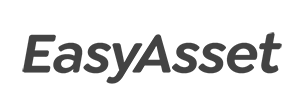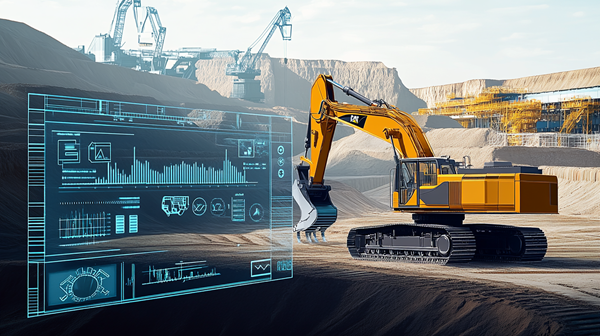Don’t get caught out by hidden costs. This TCO guide shows Australian businesses how to factor in energy, maintenance, insurance, and tax to uncover equipment’s real price.
Key takeaways
- TCO includes more than just the sticker price – When you factor in operating, maintenance, insurance, financing, and disposal costs, your equipment's real cost can be 2–3x higher than the purchase price.
- Operating costs matter – For high-use equipment, running expenses can make up 40–60% of the TCO over a 10-year period (source: Equipment Finance Australia, 2024).
- Maintenance costs add up – Poorly maintained equipment can lose up to 30% more in value and cost significantly more in unplanned downtime.
- Tax and financing impacts – Depreciation, tax deductions (like the Instant Asset Write-Off), and interest payments all affect your total financial outlay and should be considered.
- Improved procurement outcomes – Businesses using TCO analysis reduce buyer’s remorse, achieve 15–25% better ROI, and negotiate smarter long-term supplier contracts (Source: Ai Group 2023).
- Location matters – Australian factors like high energy costs, labour rates, and regulatory compliance can greatly influence TCO, making local analysis essential.
Introduction
When you’re investing in capital equipment—whether it’s a CNC machine, medical imaging system, or heavy construction plant—it’s tempting to focus solely on the price tag. But the real question is: What will it cost to own, operate, and maintain this asset over its full lifecycle?
That’s where Total Cost of Ownership (TCO) analysis comes in. A TCO approach goes beyond upfront pricing and gives you a realistic picture of your equipment’s long-term financial impact. In Australia, where operational costs can be high and compliance strict, TCO can be the key difference between smart investment and an expensive regret.
Let’s break down how to conduct a full TCO analysis tailored to the Australian market—and how to use this insight to make informed, profitable procurement decisions.
What is total cost of ownership (TCO)?
TCO is a financial estimate that helps you assess the entire cost of purchasing and using a piece of equipment over its useful life. It includes:
- Acquisition costs – What you pay upfront or finance
- Operating costs – Fuel, energy, labour, and consumables
- Maintenance & repair costs – Routine and unexpected upkeep
- Insurance & compliance – Premiums and regulatory obligations
- Depreciation – Loss in asset value over time
- Disposal or resale value – The final value when you trade in, sell, or scrap the equipment
Why TCO matters in today’s Australian market
With the cost of doing business in Australia on the rise, understanding TCO is no longer optional—it’s essential. According to the Australian Chamber of Commerce and Industry, operational overheads like power, maintenance, and skilled labour have risen by 5.3% annually over the past three years.
Ignoring TCO can result in:
- Underestimating long-term costs
- Choosing the wrong financing terms
- Buying equipment with poor residual value
- Overspending on maintenance or energy use
On the flip side, buyers who implement TCO analysis report up to 25% better cost control and procurement outcomes over the equipment lifecycle.
The six key steps to conducting a TCO analysis for capital equipment
1. Identify your analysis timeframe
Determine how long you expect to use the equipment—5, 7, 10 or even 15 years? This affects depreciation, maintenance scheduling, and operating costs.
2. Calculate acquisition costs
This includes:
- Purchase price (or lease payments)
- Freight and delivery
- Installation
- Site preparation
- Training costs
Example: A $120,000 CNC machine might incur an additional $10,000–$15,000 in delivery, installation, and initial training.
3. Estimate operating costs
Operating costs in Australia vary based on location, use intensity, and local resource prices. Common factors include:
- Electricity/fuel consumption – Australia has some of the highest commercial energy costs in the OECD, especially in regional areas.
- Labour to operate equipment
- Consumables and wear items
Example: An espresso machine in a café may use $2,000 worth of water, electricity, and descaling agents annually—small costs that compound over time.
4. Project maintenance and repair costs
Don’t just budget for scheduled maintenance—account for:
- Emergency breakdowns
- Labour cost inflation
- Spare part availability and pricing (which varies if the equipment is imported)
A study by Safe Work Australia in 2023 found that unscheduled downtime costs Australian SMEs an average of $12,700 per incident, due to lost productivity and rush repair fees.
5. Include financing, tax, and insurance considerations
If you're financing the equipment:
- Factor in interest over the loan term
- Include lender fees and setup charges
- Consider insurance premiums (especially for high-value or high-risk equipment)
- Apply any available tax advantages (e.g. Instant Asset Write-Off, depreciation rules under Division 40)
Tip: Tools like the ATO’s Depreciation and Capital Allowances Tool can help you forecast these tax impacts.
6. Forecast residual value or disposal cost
Consider:
- Estimated resale or trade-in value
- Costs for decommissioning or disposal
- Recycling or environmental levies
Example: A diesel-powered generator may have a trade-in value of 30–40% after 5 years if well maintained—but could be much lower if emissions regulations change.
Key Australian factors that affect TCO
Energy prices
With commercial electricity rates in Australia ranging from 20 to 30 cents per kWh, energy-hungry equipment can drastically increase TCO. Consider energy efficiency ratings and renewable integration options.
Regulatory compliance
Compliance with Australian safety standards (like AS/NZS 3760 for electrical testing) can require inspections, certifications, and upgrades. These hidden costs must be factored in.
Skilled labour shortages
Hiring and retaining qualified technicians for maintenance can be costly. In 2024, the average hourly rate for specialised equipment technicians reached $82/hr in metro areas (Source: SEEK Salary Insights).
Location-based logistics
Freight, service access, and repair turnaround times vary by region. Businesses in WA, NT, or rural QLD often face 10–15% higher logistics and service costs than those in major cities.
How to use TCO to make smarter buying decisions
Use your TCO insights to:
- Compare similar equipment options – One machine may cost more upfront but offer lower fuel and service costs
- Negotiate better finance deals – Use TCO forecasts to structure balloon payments or align finance terms with lifecycle use
- Set maintenance contracts – Fix long-term service costs into supplier agreements to reduce risk
- Prioritise training – Operators who are properly trained reduce wear and tear, lowering long-term repair costs
Pro tip: Build a simple Excel model or use online procurement calculators that account for Australian input costs and tax rules.
FAQs about TCO analysis for Australian buyers
Q: Is TCO analysis only useful for expensive equipment?
No. Even mid-sized purchases (e.g. $20K–$50K) can carry significant ongoing costs. TCO helps uncover the real ROI across all categories.
Q: What if I don’t know future maintenance or operating costs?
Start by getting supplier data, industry benchmarks, or third-party service quotes. It’s better to estimate than ignore.
Q: How often should I review my TCO assumptions?
Annually. Operating conditions, fuel costs, and servicing contracts can shift over time.
Q: Does TCO apply to leased equipment?
Yes. Leasing shifts some cost categories (e.g. ownership risks), but you still need to track operating, insurance, and disposal outcomes.
Q: Where can I get Australian benchmarks for equipment costs?
Start with industry groups like Ai Group, Safe Work Australia, and IBISWorld. Many suppliers also provide whitepapers and case studies.
Conclusion
Understanding your equipment’s true cost doesn’t stop at the invoice. A thorough Total Cost of Ownership analysis gives you the visibility to make smarter, more sustainable procurement choices—especially in the dynamic Australian business environment where costs fluctuate and margins are tight.
By factoring in everything from maintenance to energy use, insurance to resale value, you can avoid nasty surprises and focus on long-term profitability. Whether you're scaling your operations, replacing ageing assets, or investing in new technologies, TCO analysis puts you in control of your financial future.


